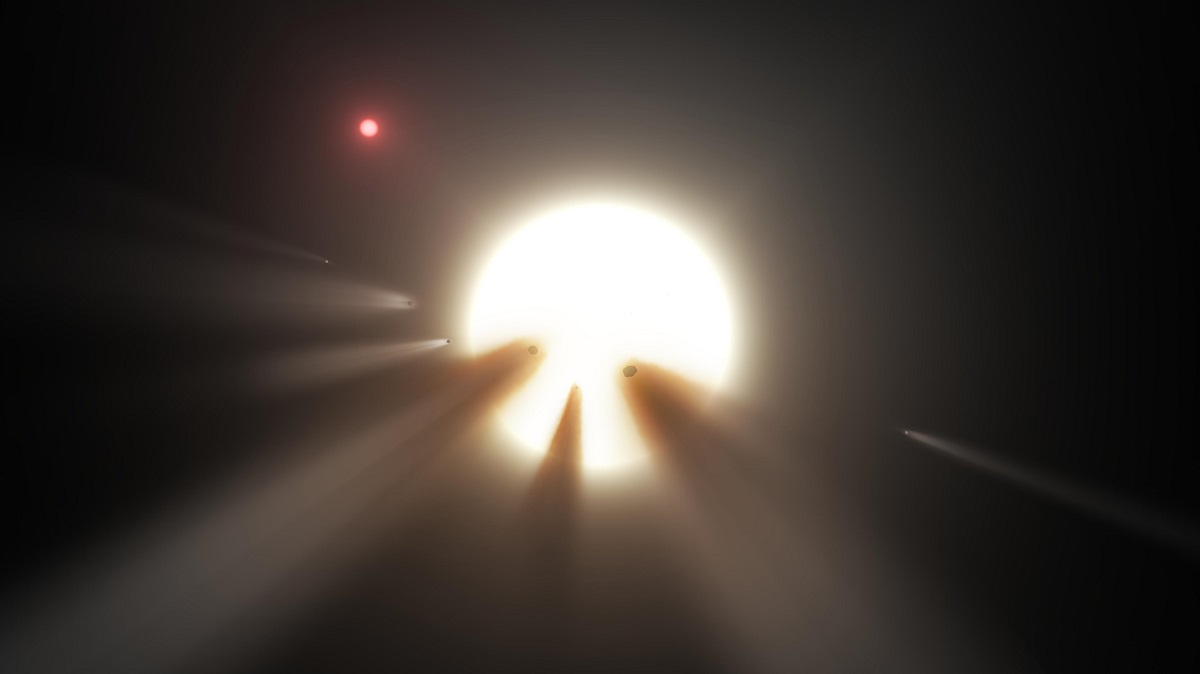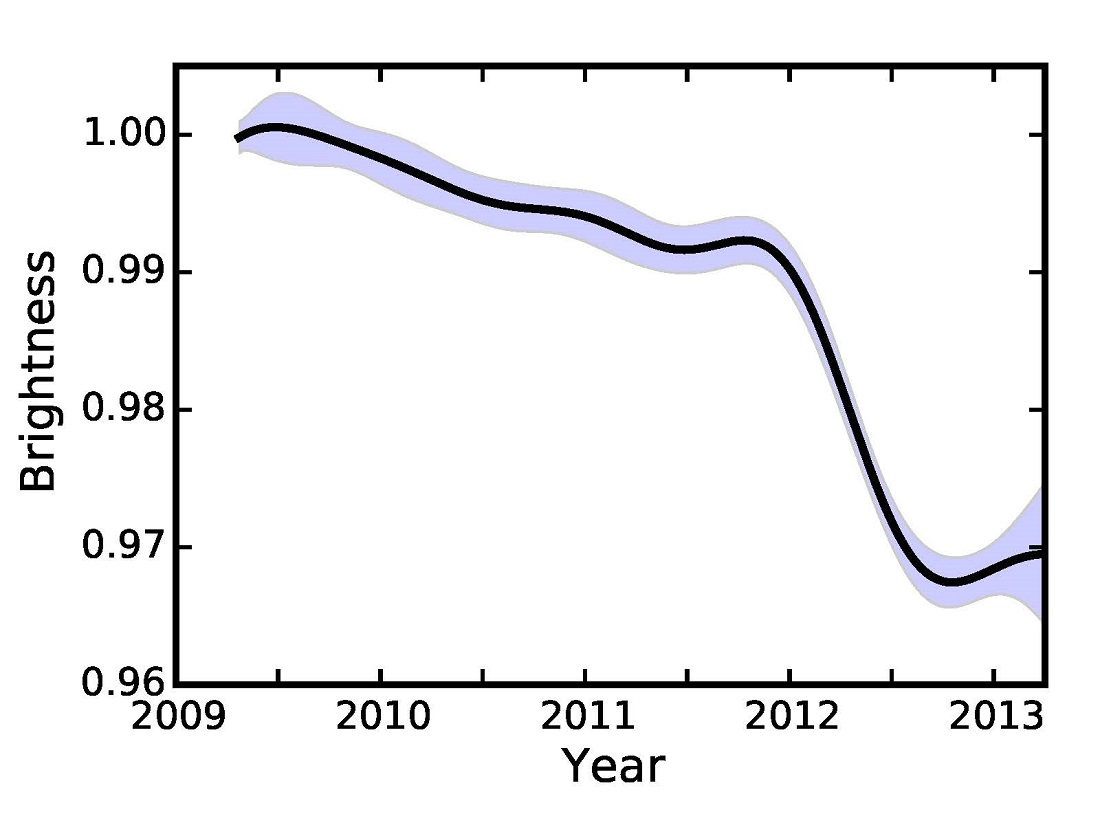'Alien Megastructure' Star Keeps Getting Stranger

The more scientists learn about "Tabby's Star," the more mysterious the bizarre object gets.
Newly analyzed observations by NASA's planet-hunting Kepler space telescope show that the star KIC 8462852 — whose occasional, dramatic dips in brightness still have astronomers scratching their heads — has also dimmed overall during the last few years.
"The steady brightness change in KIC 8462852 is pretty astounding," study lead author Ben Montet, of the California Institute of Technology in Pasadena, said in a statement. [13 Ways to Hunt Intelligent Alien Life]
"Our highly accurate measurements over four years demonstrate that the star really is getting fainter with time," Montet added. "It is unprecedented for this type of star to slowly fade for years, and we don't see anything else like it in the Kepler data."
KIC 8462852 hit the headlines last September, when a team of astronomers led by Tabetha Boyajian of Yale University announced that the star had dimmed dramatically several times over the past few years — in one case, by a whopping 22 percent.
These brightness dips are too significant to be caused by an orbiting planet, so scientists began suggesting alternative explanations. Perhaps a planet or a family of orbiting comets broke up, for example, and the ensuing cloud of dust and fragments periodically blocks the star's light. Or maybe some unknown object in the depths of space between the star and Earth is causing the dimming.
The brightness dips are even consistent with a gigantic energy-collecting structure built by an intelligent civilization — though researchers have been keen to stress that this "alien megastructure" scenario is quite unlikely.
Breaking space news, the latest updates on rocket launches, skywatching events and more!
The weirdness increased in January 2016, when astronomer Bradley Schaefer of Louisiana State University reported that KIC 8462852 also seems to have dimmed overall by 14 percent between 1890 and 1989.
This conclusion is based on Schaefer's analysis of photographic plates of the night sky that managed to capture Tabby's Star, which lies about 1,500 light-years from Earth. Some other astronomers questioned this interpretation, however, suggesting that differences in the instruments used to photograph the sky over that time span may be responsible for the apparent long-term dimming.
So Montet and co-author Joshua Simon, of the Observatories of the Carnegie Institution of Washington, decided to scour the Kepler data for any hint of the trend Schaefer spotted. And they found more than just a hint.
Kepler observed KIC 8462852, along with about 150,000 other stars, from 2009 through 2013. During the first three years of that time span, KIC 8462852 got nearly 1 percent dimmer, Montet and Simon found. The star's brightness dropped by a surprising 2 percent over the next six months, and stayed level for the final six months of the observation period. (Kepler has since moved on to a new mission called K2, during which the telescope is hunting for exoplanets on a more limited basis and performing a variety of other observations.)
"This star was already completely unique because of its sporadic dimming episodes," Simon said in the same statement. "But now we see that it has other features that are just as strange, both slowly dimming for almost three years and then suddenly getting fainter much more rapidly."
Montet and Simon said they don't know what's behind the weird behavior of Tabby's Star, but they hope their results, which have been accepted for publication in The Astrophysical Journal, help crack the case eventually.
"It's a big challenge to come up with a good explanation for a star doing three different things that have never been seen before," Montet said. "But these observations will provide an important clue to solving the mystery of KIC 8462852."
Follow Mike Wall on Twitter @michaeldwall and Google+. Follow us @Spacedotcom, Facebook or Google+. Originally published on Space.com.

Michael Wall is a Senior Space Writer with Space.com and joined the team in 2010. He primarily covers exoplanets, spaceflight and military space, but has been known to dabble in the space art beat. His book about the search for alien life, "Out There," was published on Nov. 13, 2018. Before becoming a science writer, Michael worked as a herpetologist and wildlife biologist. He has a Ph.D. in evolutionary biology from the University of Sydney, Australia, a bachelor's degree from the University of Arizona, and a graduate certificate in science writing from the University of California, Santa Cruz. To find out what his latest project is, you can follow Michael on Twitter.

